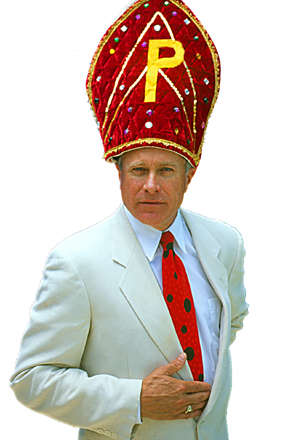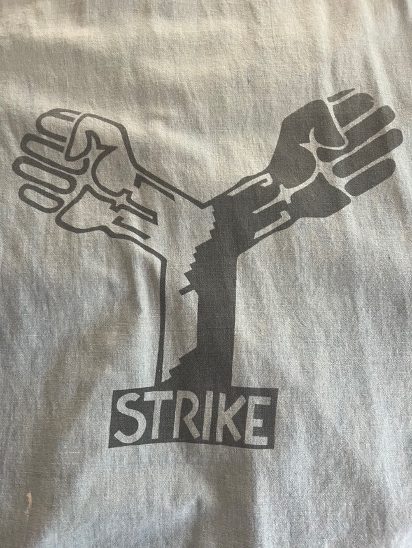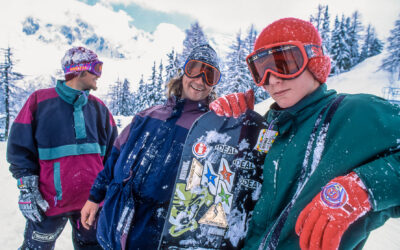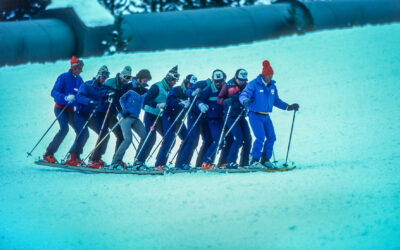
In the spring of 1970, I was finishing up my sophomore year at Yale. Not unlike the storms of protest that have swept through the halls of academia recently, the normal student pursuits of spring were shoved aside by a spike of anti-war protests that ground normal operations to a halt. Yale became a protest epicenter, not because of the Vietnam war and Yale’s role in sustaining the military-industrial complex, but because the murder trial of two prominent Black Panthers – Erica Huggins and Bobby Seale – was being held at the U.S. Courthouse in downtown New Haven. When Princeton students called for a nationwide student strike after the conflict in Vietnam escalated with the bombing of Cambodia, Yale had already been shut down for weeks.
When I went online to refresh my dusty memory of events, I found no mention of the Yale student strike, and even some references on Wikipedia that asserted that Yale president Kingman Brewster – and Yale students – were against the national strike. Huh?
I readily admit that this chapter of The Making of a Skier is only tangentially related to skiing. I was on the Yale Ski Team that winter – captained by my brother Robin – and left my mark on the season when I used my face as landing gear on my first attempt at Nordic jumping. While I was being stitched up at the South Burlington Hospital – I remember they issued me a charge card, as if they knew I’d be back – I had no inkling that later that spring I would be in the medic’s role when a riot broke out on campus.
The New Haven Nine
The match that lit the fuse of the New Haven riots was the trial of Black Panther co-founder Bobby Seale, co-defendant Ericka Huggins and seven other Panthers in a New Haven courthouse that sat cheek-by-jowl with the Yale campus. The defendants were accused of playing various roles in the murder of an FBI informant, so the stakes could not have been higher. The trial proved to a lightning rod for a nation bristling with racial tension and increasingly strident anti-war sentiment (particularly among draft-age students).
By this time in the arc of the Vietnam War, public protests against the conflict were part of the national fabric. Semi-pro protesters like the Chicago Seven, Students for a Democratic Society and Students Against War and Fascism all poured into New Haven in a sign of solidarity with the Panthers in the dock. Abbie Hoffman and Jerry Rubin were easy to spot, usually surrounded by a group of inquisitive – and largely supportive – students. Before the tumult was over, I believe all seven of the famed Chicago riot defendants made at least a cameo appearance.
The huge influx of dissidents looking to tangle with The Man put the student population on edge, if not necessarily at risk. At Jonathan Edwards College (one of 12 undergraduate residential colleges), everyone in residence was invited to convene in the main dining hall to take the measure of the collective mood. (I presume the same happened at the other eleven.) The more timid were scared and wanted to go home, but a larger percentage of the crowd, myself included, advocated for keeping the university open and operating. It didn’t take long to arrive at a consensus that those who wanted to stay could, but many classes ended up in limbo, partially complete. I remember that one take-home final I slipped under an instructor’s door – he happened to have been a roommate of Daniel Cohn-Bendit, the leftist agitator, at the Sorbonne – was later returned with the note that the professor had already returned to France.
I don’t recall exactly how everyone knew when the powder keg of amped-up visitors would ignite, but it was predicted far enough in advance to at least take minor precautions. Not wishing to march alongside raving knuckleheads, but even less interested in the causes they were rabidly protesting, I chose to be a volunteer medic, along with George Stone and Scott McClintock, my former and future roommates, respectively.
George, Scott and I were given the plum assignment of hanging out on the Courthouse steps. Aside from our Red Cross badges, we were issued a roll of gauze and a canteen of water, intended to assuage the agonies of the tear gas to come. As I looked around us from the elevated vantage point of the Courthouse steps, it was easy to see that we could not have been more in the line of fire. Literally.
The Courthouse sat a major intersection, providing an unobstructed view of the small armies assembling in the broad avenues just north of us. One column of protesters was led by the SDS faction, while one block away, Youth Against War and Fascism were getting up the gumption to charge the Courthouse. I checked my canteen and my gauze. I was ready for them.
That’s when I noticed the National Guard units lining up to block these same avenues right behind the Courthouse steps.
The ostensible reason for assaulting the Courthouse was to Free Bobby! Free Ericka! Free All Political Prisoners! What the geniuses at SDS and YAW&F failed to realize was that none of the defendants were lodged in the Courthouse (duh!). They were miles away in a penitentiary in Danbury. Not allowing such fine points to deter them, the phalanx of SDS conscripts charged down the avenue, ready to tangle. On a parallel track one block away, the goofballs who fancied themselves against War and Fascism moved en masse. That’s when the cannisters of tear gas began to ignite like it was the Fourth of July. Ghostly, choking clouds began to creep up the marble steps of the Courthouse.
That’s when I heard it. The unmistakable sound, right behind me, of a chorus of rifles locking and loading in unison. I remember thinking, I sure hope this tear gas shit works, or I’m toast.
Turns out, tear gas is a remarkably effective crowd-control medium. Liberally applied, it takes the fight right out of you. Thank the Lord I still had my gauze and canteen at the ready! I would need it just to get myself back to my room.
While the acrid smoke billowed up the Courthouse steps, the two anti-war factions took their frustrations out on each other. The cops stayed in their patrol cars, tossing out tear gas cannisters like basketball players practicing their hook shot.
By the next morning, the urge to riot had been successfully defused. I still had a paper to do on The Problem of Evil, an assignment I would spend all summer trying to polish to a golden hue, unaware that my professor had already turned in a grade for me.
I should have retitled my submission, The Problem with Procrastination.
I haven’t missed a deadline since.
Dear Readers, before concluding this week’s Revelation, I want to thank you for your forbearance. I know this isn’t what you normally expect to read here. But I wanted to share a vignette from my youth that illustrates that the problems we have getting along together today are not new. Democracy is often a brawling, unattractive, shit show. We have survived other, horrific moments in our collective journey and lived to tell about them. Sure, it doesn’t help that we’ve screwed up public education, creating an electorate of dunces. But that’s no reason to give up on this great project. It’s time we got back to stressing hope over despair, the warmth of compassion over the heat of hatred, and trying to right our wrongs instead of papering over them. We can do better, if only we try.
Related Articles
The Making of a Skier, Chapter XI: Desperate Measures
When Head humanely, if rather brusquely, terminated my tenure in 2001, the ski business in the U.S. was already facing stiff headwinds, a brewing storm that would turn into a full-on debacle when 9/11 disrupted all commerce. I became unemployed just in time for the job market to implode.
I don’t handle inactivity well. I started writing a very long, very dreadful novel, composed a handful of scripts for Warren Miller – and later, Jeremy Bloom – to recite and scribbled batches of brochure copy and white papers for industries as diverse as accounting software, instrumented football helmets that registered concussions and risk assessment based on location.
The pickings were slim, but they wouldn’t have amounted to anything at all were it not for a little help from my friends. Andy Bigford, who I’d worked with at Snow Country, hired me for the Warren Miller gig. A college chum kindly engaged me to write white papers on accounting fraud. But it was Dave Bertoni, an erstwhile colleague from Salomon days, who joined me in creating Desperate Measures: A Training Method for Selling Technical Products at Retail.
Reader Comments on Why Ski Sales Have Shrunk
In this week’s Revelation, I posted my top ten (twelve, actually) reasons why skis sales have shrunk, along with the musings of two Dear Readers on the subject. Note that the topic’s focus was ski sales at retail, not skier or skier/rider participation rates, subjects that are certainly related but just as certainly not the same.
Below are verbatim reader responses culled in the last 48 hours. I’ve corrected the odd typo, but otherwise left these contributions intact.
My thanks to all who took the time to tell their tales. – J
Top Reasons U.S. Ski Sales Have Shrunk
[As I wrapped up an earlier Revelation, I proposed to my beloved readership that they share their list of the top ten reasons U.S. ski sales have shrunk. I elicited only two written responses, so I’ll reproduce both here in their entirety, along with my musings on the subject. Consider these submissions tinder to light a fire under you, Dear Reader, to submit a list of your own.]
From Rick Pasturczak
1. Snowboarding-
I’ve noticed most snowboarders are 12 to 20 years old and once they become an adult, almost all stop. While I noticed most skiers continue on.
2. High school and college sports-
Schools now require practicing sports during Christmas and spring breaks taking away opportunities to hit the slopes and family vacations to the mountains. I’ve been told by many parents the coaches forbid them to ski.
3. Travel costs-
Lodging, airfare, ground transportation, and lift tickets.
4. Video games
5. Cost of lessons make it expensive to improve.
6. Confusing selection of equipment
7. Magazines and movies showing extreme skiing
8. Cruising. We need some resorts to be all inclusive.
9. Baggy pants. Bring back stretch pants and sex appeal.
10. Last, we need mother nature to be more consistent with snow.





